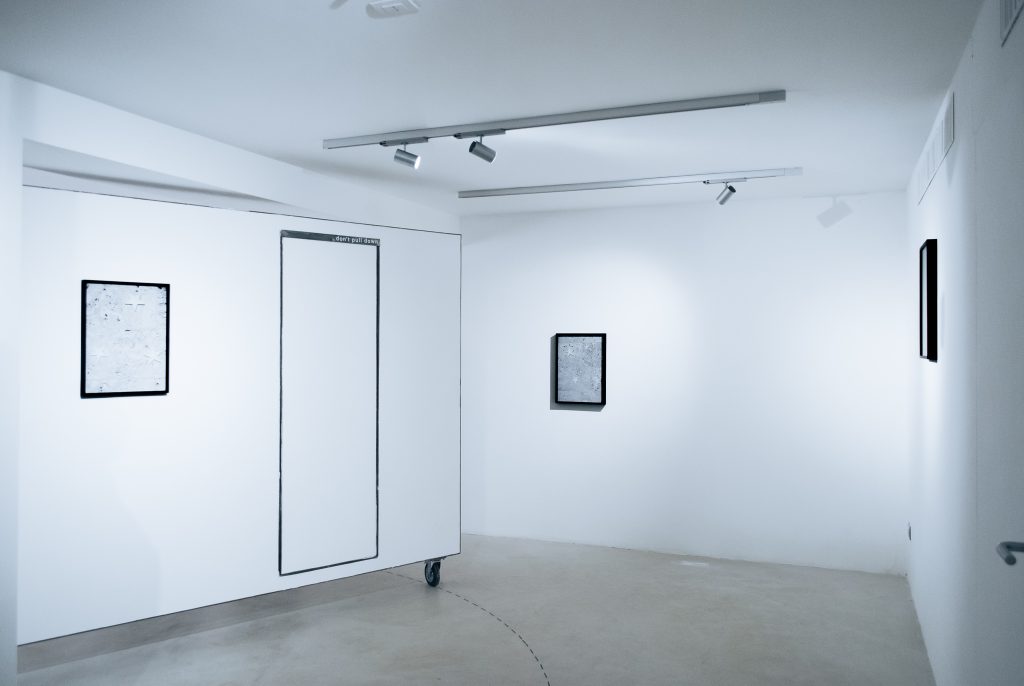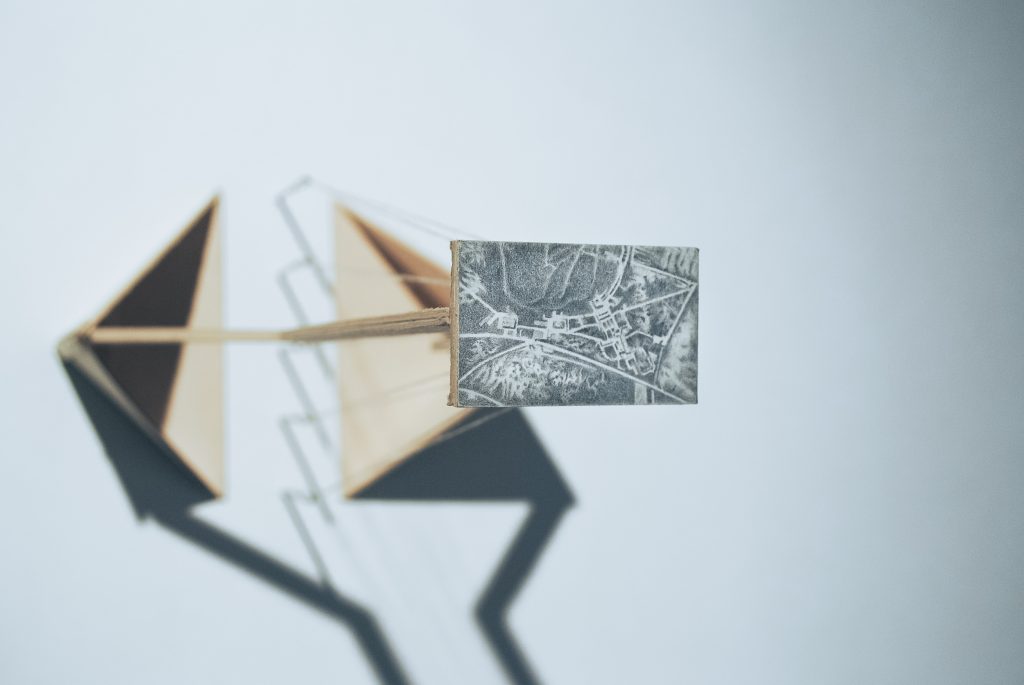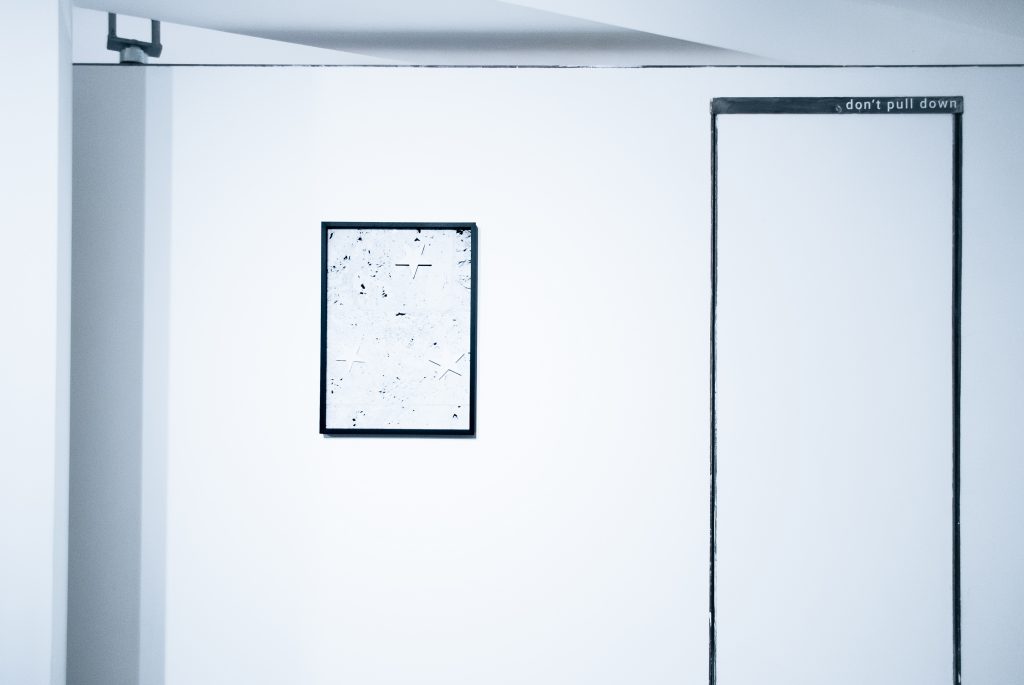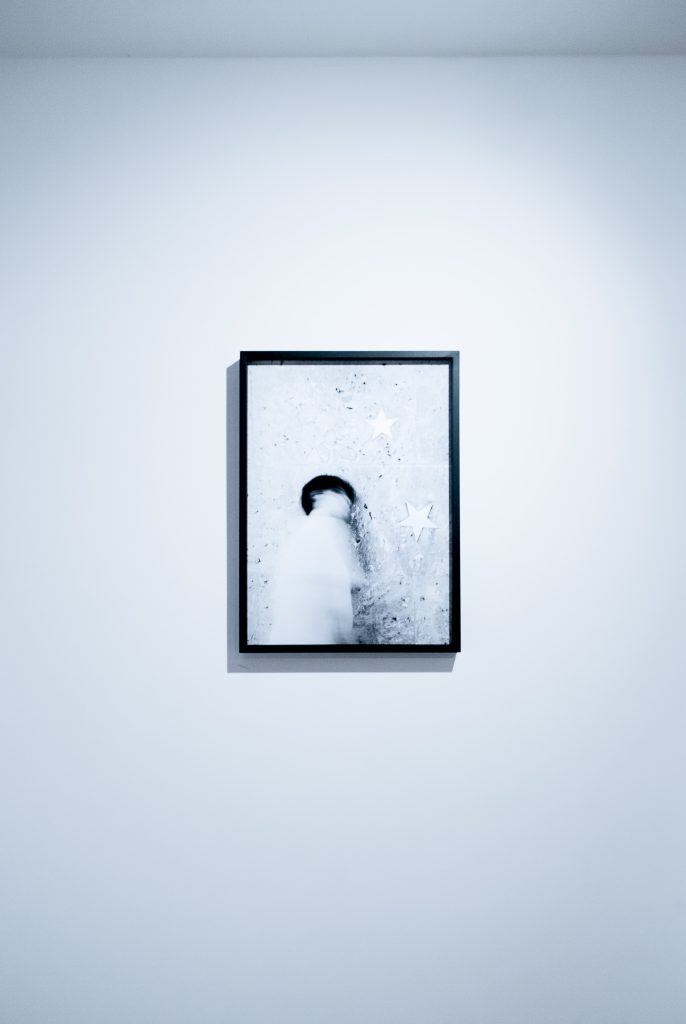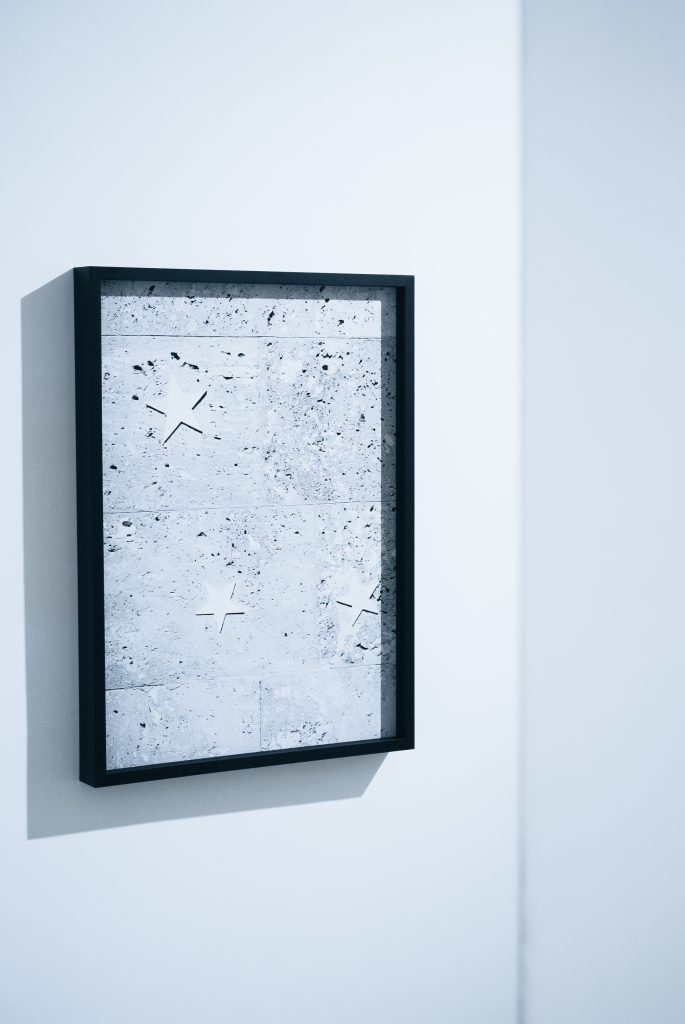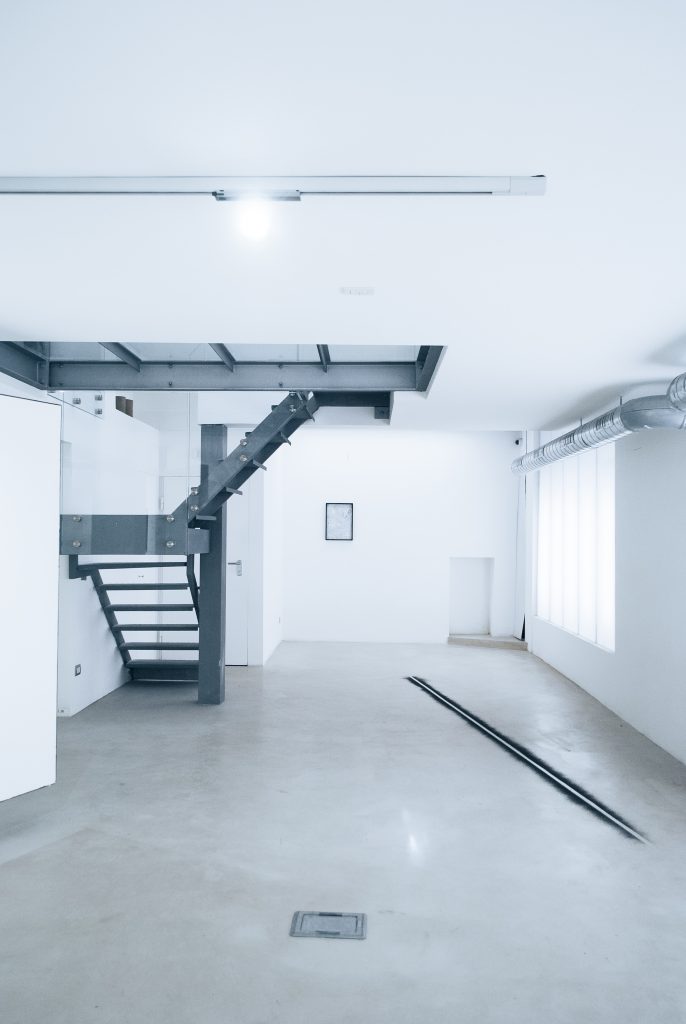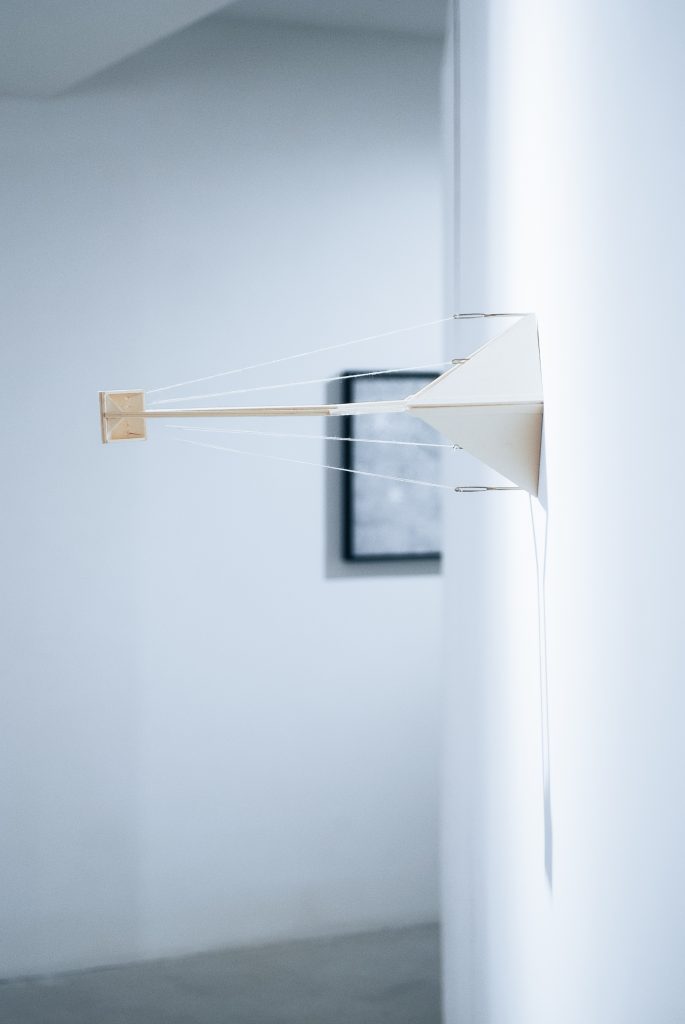L’OMBRA CHE RESTA
Jacopo Martinotti, Giorgio Mattia
23. 10. 25 – 08. 11. 25
L’ombra che resta è la prima mostra di Doppie, progetto curato da
Attilio A. Terragni e Chiara Smedile
e creato per far dialogare le opere di due artisti emergenti.
La mostra apre così un confronto tra le ricerche di Jacopo Martinotti
e Giorgio Mattia, creando un
viaggio nella memoria come flusso di apparizioni.
Le opere di Jacopo Martinotti e Giorgio Mattia abitano questa soglia tra visione e ricordo, esplorando il paesaggio urbano e industriale di Milano nel Novecento.
Martinotti lavora sulla dissolvenza del corpo e sulla luce come racconto. In Planetario, la figura umana si trasforma in astro, immersa in un cosmo interiore. In Eclisse, l’ombra dissolve ogni certezza dello
sguardo. Le sue immagini intrecciano strutture architettoniche, materiali effimeri e presenze fugaci, trasformando lo spazio in un racconto sensibile.
Mattia attraversa le rovine dell’industria siderurgica, in particolare le acciaierie Falck.
Le sue installazioni, come S.T.G.M., raccontano la tensione tra sviluppo industriale e perdita di identità, restituendo la figura operaia come presenza fantasma di una storia collettiva.
La mostra si costruisce così come un paesaggio stratificato, dove luce, materia e rovina si intrecciano.
Memorie instabili e immagini fragili si offrono come soglie poetiche e politiche, costellazioni provvisorie che interrogano il nostro presente.
Jacopo Martinotti
(Milano, 1995) vive e lavora a Milano. Dopo la laurea magistrale in Arti Visive e Studi Curatoriali alla NABA (2020), è docente presso NABA dal 2022. La sua ricerca indaga la memoria come materia plasmabile, attraverso gesti e presenze corporee che evocano resti, fragilità e dimensioni monumentali. Ha esposto in spazi e istituzioni come Palazzo delle Esposizioni (Roma), Palazzo Collicola (Spoleto), Palazzo Reale (Milano), MAXXI (Roma) e Museo del Novecento (Milano).
Giorgio Mattia (1997) vive e lavora a Milano. Si è formato in Pittura e Arti Visive e successivamente in Arti Visive e Studi Curatoriali presso NABA, Milano. La sua ricerca intreccia pratiche
d’archivio, iconografie esoterico-sacrali e riflessioni sul linguaggio, contrapponendo alle grandi narrazioni storiche e religiose un’“iconografia dell’incertezza”. Ha presentato mostre personali e collettive in spazi e istituzioni
come Fondazione Leonesio, Triennale Milano, Fondazione Pini, Galleria San Fedele e Palazzo Monti.
……………………………………………………………………..
L’ombra che resta is the first exhibition of Doppie, a project curated by
Attilio A. Terragni and Chiara Smedile, created to foster a dialogue between the works of two emerging artists.
The exhibition opens a conversation between the research of
Jacopo Martinotti and Giorgio Mattia, creating a journey through memory as a flow of apparitions.
The works of Jacopo Martinotti and Giorgio Mattia inhabit this threshold between vision and recollection, exploring the urban and industrial landscape of twentieth-century Milan.
Martinotti works on the dissolution of the body and on light as narrative. In
Planetario, the human figure transforms into a celestial body, immersed in an inner cosmos. In Eclisse, shadow dissolves all certainty of vision. His images weave together architectural structures, ephemeral materials, and fleeting presences, transforming space into a sensitive narrative.
Mattia moves through the ruins of the steel industry, particularly the
Falck steelworks. His installations, such as S.T.G.M., narrate the tension between industrial development and the loss of identity, restoring the figure of the worker as a ghostly presence of a collective history.
The exhibition thus unfolds as a layered landscape, where light, matter, and ruin intertwine.
Unstable memories and fragile images present themselves as poetic and political thresholds—temporary constellations that question our present.
Jacopo Martinotti
(Milan, 1995) lives and works in Milan. After earning his master’s degree in Visual Arts and Curatorial Studies at NABA
(2020), he has been teaching at NABA since 2022. His research investigates memory as a malleable material, through gestures and bodily presences that evoke remnants, fragility, and monumental dimensions. He has exhibited in spaces
and institutions such as Palazzo delle Esposizioni (Rome), Palazzo Collicola (Spoleto),
Palazzo Reale (Milan), MAXXI (Rome), and Museo del Novecento
(Milan).
Giorgio Mattia
(1997) lives and works in Milan. He studied Painting and Visual Arts and later pursued Visual Arts and Curatorial Studies at
NABA, Milan. His research intertwines archival practices, esoteric-sacred iconographies, and reflections on language, opposing grand historical and religious narratives with an “iconography of uncertainty.” He has presented solo and group exhibitions in spaces and institutions such as
Fondazione Leonesio, Triennale Milano, Fondazione Pini
, Galleria San Fedele, and Palazzo Monti.


